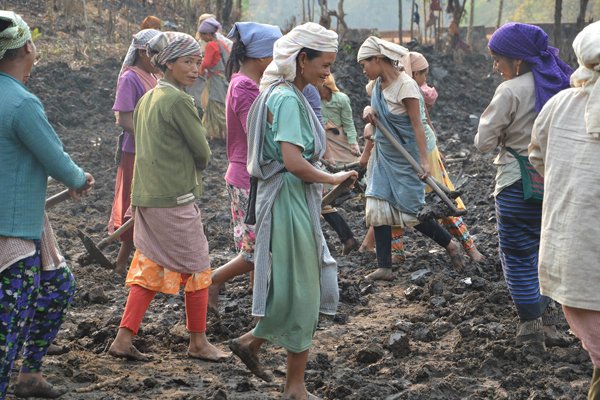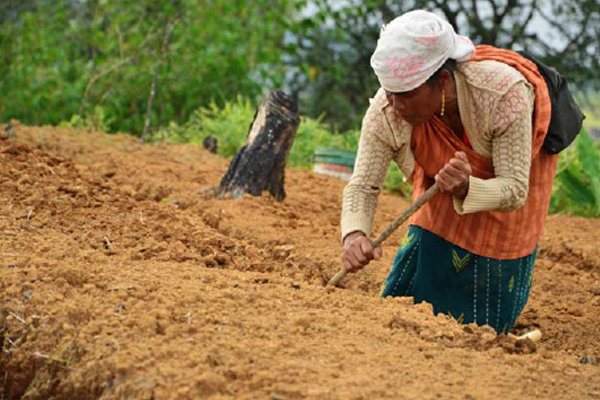Megha-LAMP facilitated the implementation of Integrated Natural Resource Management (INRM) works in collaboration with MGNREGS in Laitduh village to address water security challenges for all 204 residents.
The VEC prioritized and submitted the INRM plan to MGNREGS for convergence with Megha-LAMP. The plan aimed to construct two R.C.C. water storage tanks—one at Kaitkasngi, situated at the edge of a steep hill with a perennial spring source, and another at Lum Dorbar, located at the village centre. A submersible electric pump and pipelines were used to pump water from Kaitkasngi to Lum Dorbar, covering a distance of 496 meters. The INRM plan and site selection were determined through a participatory meeting involving VEC functionaries and the village community.
Before the intervention, the selected site housed a perennial spring source, requiring an average household to make six trips a day, spending around three hours fetching water from the challenging terrain. The total cost of ₹10,11,196 was utilized for the interventions. The VEC mobilized ₹7,81,196 through MGNREGA, which is 3.91 times the Village Development Fund (VDF), for constructing the water storage tank. The VDF funded the installation of a submersible pump (2HP/240V) and associated infrastructure. The community contributed ₹30,000 in labour, which is equivalent to 15% of the VDF.
Men undertook most of the heavy work, while women were involved in tasks like crushing stones and transporting materials. Despite challenges, including delays in material delivery and internal disputes, the community was able to persevere with the implementation of the INRM plan.

During the implementation process, the technical assistant of MGNREGA facilitated the VEC in constructing the water storage tank, and the field engineer of MBMA facilitated the VEC in selecting and procuring the submersible pump, including pipe connection and installation. The field engineer also assisted the community in catchment protection and other INRM works for the remaining tranches.
Post intervention, the Kaitkasngi spring was treated, and runoff was controlled, redirecting water to the storage tank. With the pump installed, water from the source was brought closer to the settlements, which eliminated the need for residents to fetch drinking water directly from the source, saving about three hours daily. This water also served washing and sanitation purposes.
The intervention benefited the entire community, and significantly reduced water-fetching time from 30 minutes to 5 minutes per trip—a remarkable 83.33% reduction in daily drudgery.
To ensure sustainability, the VEC and the Village Institution established INRM-related policies, which included the prohibition of tree felling and encouragement of tree planting drives to protect the catchment area. These rules have been willingly complied with by the village community.
The VEC undertakes post-intervention repair and maintenance of the INRM infrastructures supported under Megha-LAMP. The electricity bill for the pump and maintenance or repair works are being covered by a separate fund collected monthly from the beneficiary households. Future plans include tree plantation drives at Kaitkasngi, Wahumdor, and Wahsaitmaw, contour trenches at Kaitkasngi, a water tap platform in the village bringing water from Lum Dorbar nearer to homes, and spring chambers at Wahumdor and Wahsaitmaw



